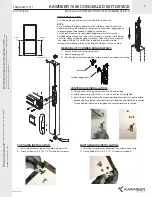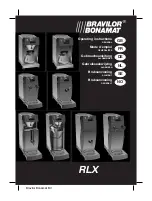
750-643 [MP-Bus Master Module]
•
17
Data transfer
WAGO-I/O-SYSTEM 750
I/O Modules
2.1.1.8 Data transfer
The serial MP-Bus module allows devices with MP-Bus and PP-interfaces to
be connected. The MP-Bus telegrams are transmitted to the MP-Bus
completely transparently. Other application-specific information can also be
transmitted.
The byte length of pure MP/PP telegrams varies between min. 4 bytes and
max. 10 bytes. The typical length is 7 bytes. The module bus communication
of all WAGO-I/O-SYSTEM 750 fieldbus controllers provides a maximum of
8 bytes, including control and status bytes, in each module bus telegram. MP-
Bus messages must therefore be split. They are divided between two
consecutive module bus telegrams. This applies both for the direction from the
fieldbus controller to the MP-Bus module and vice versa. The splitting process
is controlled by Bit 4 of the control or status bytes (DPID). The first partial
data packet is transferred when DPID = 0 and the second partial data packet
when DPID = 1.
The message code is identical for both partial data packets. This also applies
to the error bit ERR in the status byte for the direction to the fieldbus
controller.
In order to safeguard the sequence of data packets, a transaction number
(TNO) is assigned for each set of associated partial data packets. This
transaction number occupies the last byte of a module bus telegram and must
be incremented for each subsequent pair of partial data packets. The range of
values for the transaction numbers is thus 1 to 255 (255 is followed by 1
again). The transaction numbers are independent of the direction of
communication between fieldbus controller and MP-Bus master module.
When the MP-Bus module has received the data from the module bus for a
complete MP-Bus telegram, then this is signaled on the MP-Bus.
Error-free and erroneous MP-Bus communications are reported to the fieldbus
controller in different module bus telegrams. The messages are distinguished
by a Message ID, the message code (MSG_CODE). The message code is part
of the first data byte after the control or status byte. In all, there are 16
message codes available for both directions, ranging in value from 0 to 15.
Furthermore, four extended control bits or status bits are defined in the first
data byte along with the message code.
The remaining extended control and status bits are used for controlling or
confirming active module bus telegrams.














































